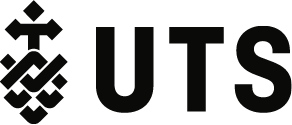Last year, I explained how we used Agile methodology to give constructive feedback in Mechanical Design Fundamentals Studio 1. In this course, students work in teams to construct a robot for an optimally enriching studio experience. As part of the process, students submit a portfolio as an internship tool and a journal to capture their reflections.
A place to reflect
Due to the open-ended environment in the studio, we have since embedded a more guided reflection. One of the reflection tools is a Microsoft Form where students record their highlights and aha moments of their learning.
This approach provides a dynamic and ongoing picture of student learning and challenges. It goes beyond traditional end-of-session feedback tools such as EFS and SFS. It also fosters a stronger sense of belonging, as students gain insight into their peers’ reflections. This helps normalise shared struggles and successes.
We divided the questionnaire into the following sections:
👍 Highlights
This section is for students to reflect on and share the positive aspects of their learning experience. Students might identify moments where they felt successful in understanding or applying concepts, or felt particularly motivated or engaged. They can also pinpoint positive interactions or times they found certain materials or methods effective. This reinforces positive behaviours and strategies, and is part of positive reinforcement and self-efficacy development.
👎 Lowlights
Here, students acknowledge challenges or obstacles faced in their learning. These can range from difficulty in grasping topics to moments when they found it hard to stay focused or engaged. This is aligned with critical reflection and problem-solving, as learners are encouraged to identify areas for improvement.
💡Aha moments
This is the place for sharing new insights or realisations – when did something suddenly click? Students might discuss new strategies that made learning more effective, or new interests/motivations they discovered about themselves. This promotes metacognition and adaptive learning, helping learners to recognise their growth and adapt their strategies for future success.
Integrating GenAI
The process of surfacing highlights, lowlights, and aha moments from large sets of reflections becomes more efficient and insightful when using Generative AI. Instead of manually scanning through hundreds of individual responses, the AI can quickly identify recurring points of celebration (highlights), common challenges or barriers (lowlights) and breakthrough ideas or shifts in perspective (aha moments). As well as saving time, this approach captures valuable insights from the entire cohort, surfacing perspectives that might otherwise stay hidden in individual narratives.
Reflection > action
The integration of GenAI also makes it possible to move from raw reflection to actionable synthesis. By clustering similar insights and presenting them in digestible summaries, the AI supports learners in seeing where they are thriving, where difficulties are common and where transformative learning is taking place. At the same time, these synthesised insights can provide teaching staff with a real-time view of how students are engaging with material. This enables academics to respond proactively, amplify what works well, address shared concerns and adapt teaching strategies to meet evolving needs.
Keeping it ethical
Equally important is the ethical use of GenAI in this process. Clearly inform learners how their reflections will be analysed and explicit consent should be embedded so they can choose whether to include their contributions. This ensures transparency, trust and respect for individual choice.
By safeguarding privacy and giving students agency over their data, institutions not only uphold ethical standards but also strengthen the legitimacy and impact of the insights generated. In this way, GenAI becomes not just a tool for efficiency, but a means of fostering reflective practice that is both responsible and responsive to the needs of learners and educators alike.
Find out more about Anna’s experience using GenAI to analyse student feedback in the first in our new series of Teaching with GenAI showcases on 15 September:
